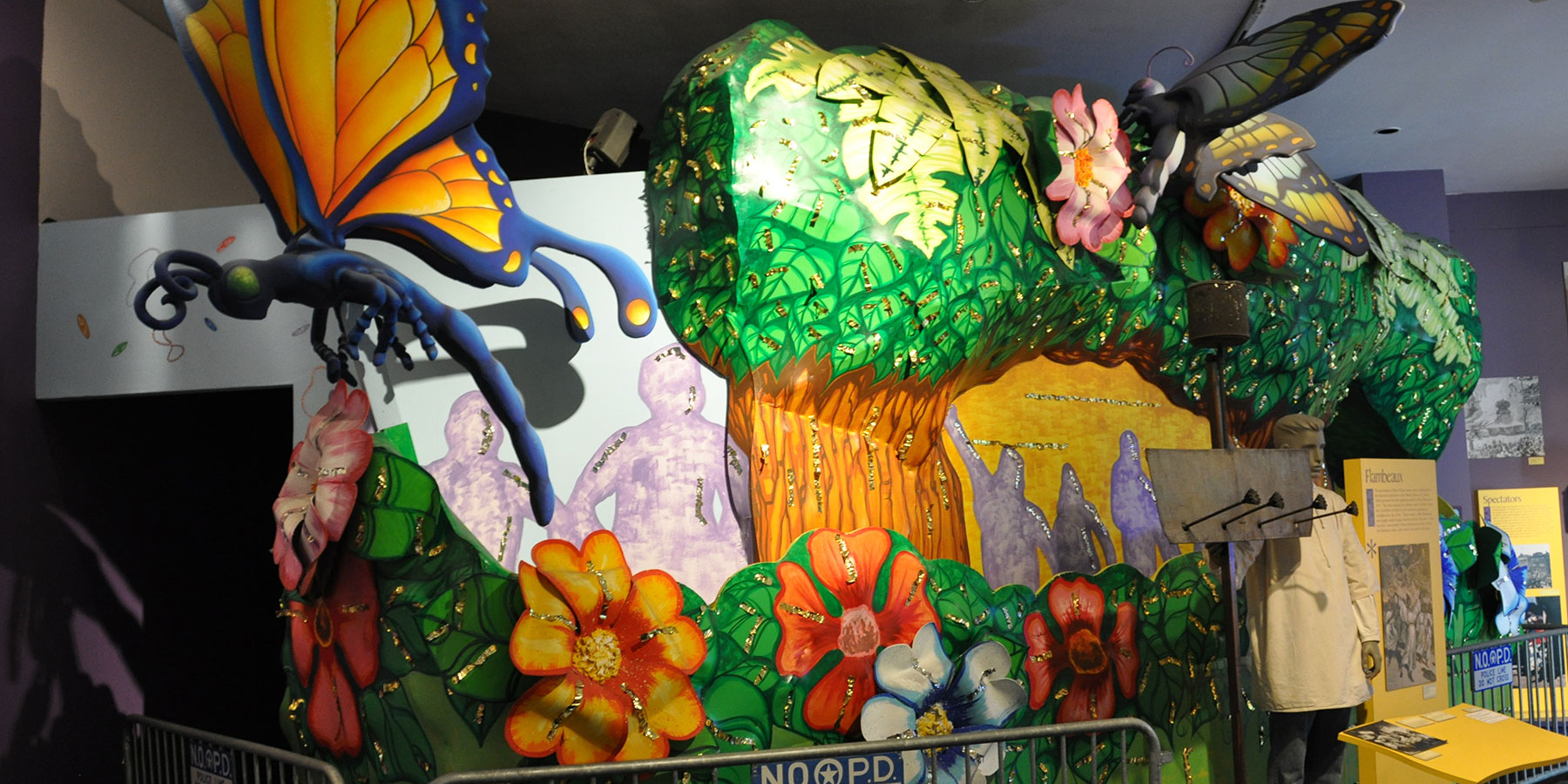Mardi Gras: It’s Carnival Time in Louisiana!
This wide-ranging exhibit at the Louisiana State Museum’s Presbytère serves as an important reminder of what makes Mardi Gras so enduring — a passion for creativity and the love of people for a tradition. Offering an abundance of insights and artifacts – ball favors, invitations and dance cards; costumes and “crown jewels;” posters and original design illustrations — it presents the storied history of a celebration that began informally and came to expresses and encompass everything that’s special about New Orleans.
While documentation of festivities in the 18th century is scarce — early European inhabitants of New Orleans were more concerned with survival than pageantry — the multicultural appeal of street masking and parading was evident by 1823. Timothy Flint, a Protestant minister visiting from New England that year during the Carnival season, beheld a “Saturnalia” — a procession of Black revelers followed by a king wearing “a series of oblong, gilt-paper boxes on his head, tapering upwards, like a pyramid. From the ends of these boxes hang two huge tassels, like those on epaulets.” He went on describe “moody and silent sons of the forest [Native Americans] following these merry bacchanalians in their dance, through the streets, scarcely relaxing their grim visages to a smile, in the view of antics that convulsed even the masters of the negroes with laughter.”
In the decades before the Civil War, Carnival in New Orleans consisted largely of masquerade balls and generally disorganized, spontaneous street masking and frivolity. The model for the modern Mardi Gras parade appeared in 1857 with the Mistick Krewe of Comus. By adopting a mythological namesake and presenting a thematic, meticulously organized street spectacle with theatrical scenes (tableaux) built atop wagons, followed by an invitation-only ball in which masked krewemen presented a series of tableaux based on the theme of their parade and staged before formally attired guests, Comus marked a departure from the unstructured (and often unruly) antebellum street processions and masquerade balls where everyone dressed in costume. Other krewes, notably Momus, Rex and Proteus, built upon this foundation after the Civil War.
Participation in these grand spectacles was, however, exclusive — presided over by elites who reigned like royalty over the city’s affairs. The Presbytère exhibit, which includes videos and interactive elements, shows how democratization inevitably took hold, with Mardi Gras becoming an expression of the creed “by the people, for the people.” African American traditions including Zulu, Baby Dolls, Skull and Bone and Mardi Gras Indians, also known as Black Masking Indians, get their due. A light blue seahorse costume reveals the craftsmanship that goes into Gay balls. And there’s an entire gallery devoted to rural celebrations in southeast Louisiana, known as the Courir de Mardi Gras, where bands of maskers roam the countryside gathering ingredients and financial contributions for a communal feast featuring a giant pot of gumbo. Clad in colorful costumes harking back to medieval times, they chase after chickens, perform songs and dances, improvise jokes and engage in pranks and daredevil antics.
The Presbytère is located at 751 Chartres Street, next to St. Louis Cathedral on Jackson Square. The exhibition is open Tuesday through Sunday, from 9 am to 4 pm (last ticket sale at 3:30). Admission is $7 for adults; $6 for senior citizens, students, and active military personnel; and free for children under 12. For more information, call 504-568-6968.
MardiGrasTraditions.com

